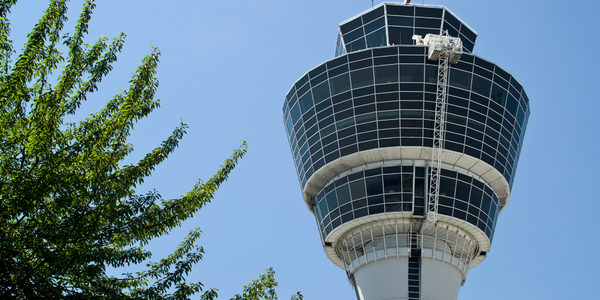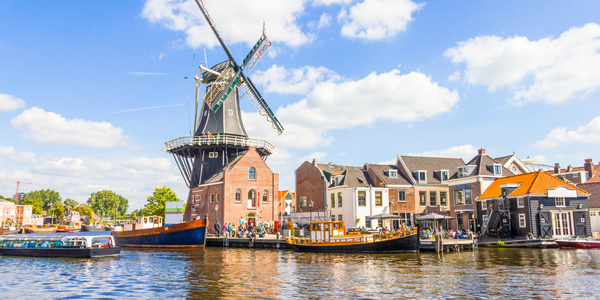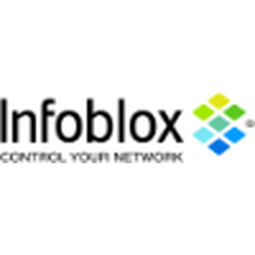Customer Company Size
Large Corporate
Region
- America
Country
- United States
Product
- Infoblox NetMRI
Tech Stack
- Network Automation
- IP Address Management (IPAM)
Implementation Scale
- Enterprise-wide Deployment
Impact Metrics
- Customer Satisfaction
- Productivity Improvements
Technology Category
- Platform as a Service (PaaS) - Connectivity Platforms
- Application Infrastructure & Middleware - API Integration & Management
Applicable Industries
- Transportation
- Cities & Municipalities
Applicable Functions
- Facility Management
- Business Operation
Use Cases
- Remote Asset Management
Services
- Training
- System Integration
About The Customer
The customer is a municipal airport located in the Midwestern United States, serving general, private, and corporate aviation at one field and scheduled service at another. It handles flights originating from the United States, Canada, Mexico, and other countries. The airport's IT organization supports airlines and other tenants serving passengers, ensuring smooth operations and connectivity. The airport offers free Wi-Fi to passengers, with 300 to 600 users accessing it at any given time. The IT team is responsible for maintaining network stability and addressing any issues that may arise, impacting both passenger experience and airline operations.
The Challenge
IP addressing is a critical component of the airport's operations. Inefficient IP management can lead to missed flights, delays, or cancellations, which can have severe consequences for airlines, including financial penalties and reputational damage. The airport's existing system, consisting of approximately 300 switches, lacked the capability to identify root causes of network issues, leading to frequent minor outages and the looming threat of major outages. The airport required a robust IP address management (IPAM) solution to ensure uninterrupted service.
The Solution
The airport's IT team discovered Infoblox NetMRI at a trade show and was impressed by its capabilities. Infoblox NetMRI is a network automation solution that offers automatic network discovery, switch-port management, network change automation, and continuous configuration compliance management for multi-vendor routers, switches, and other network devices. The IT team decided to implement NetMRI to address their IP management challenges. After installation, they allowed the system to gather data and then began running reports. NetMRI revealed that a percentage of switches had unsaved configuration changes, a problem that was not detectable with the legacy system. With this information, the IT team quickly resolved the issue, improving network reliability.
Operational Impact
Quantitative Benefit

Case Study missing?
Start adding your own!
Register with your work email and create a new case study profile for your business.
Related Case Studies.

Case Study
Turning A Stadium Into A Smart Building
Honeywell created what it called the “intelligent system” for the National Stadium in Beijing, China, turning the venue for the opening and closing events at the 2008 Summer Olympics into a “smart building.” Designed by highly controversial artist Ai Weiwei, the “Bird’s Nest” remains one of the most impressive feats of stadium architecture in the world. The 250,000 square meter structure housed more than 100,000 athletes and spectators at a time. To accommodate such capacity, China turned to Honeywell’s EBI Integrated Building Management System to create an integrated “intelligent system” for improved building security, safety and energy efficiency.
.png)
Case Study
Smart Street Light Network (Copenhagen)
Key stakeholders are taking a comprehensive approach to rethinking smart city innovation. City leaders have collaborated through partnerships involving government, research institutions and solution providers. The Copenhagen Solutions Lab is one of the leading organizations at the forefront of this movement. By bringing together manufacturers with municipal buyers, the Copenhagen Solutions Lab has catalyzed the development and deployment of next-generation smart city innovations. Copenhagen is leveraging this unique approach to accelerate the implementation of smart city solutions. One of the primary focus areas is LED street lighting.

Case Study
Airport SCADA Systems Improve Service Levels
Modern airports are one of the busiest environments on Earth and rely on process automation equipment to ensure service operators achieve their KPIs. Increasingly airport SCADA systems are being used to control all aspects of the operation and associated facilities. This is because unplanned system downtime can cost dearly, both in terms of reduced revenues and the associated loss of customer satisfaction due to inevitable travel inconvenience and disruption.

Case Study
IoT-based Fleet Intelligence Innovation
Speed to market is precious for DRVR, a rapidly growing start-up company. With a business model dependent on reliable mobile data, managers were spending their lives trying to negotiate data roaming deals with mobile network operators in different countries. And, even then, service quality was a constant concern.

Case Study
Buoy Status Monitoring with LoRa
The Netherlands are well-known for their inland waterways, canals, sluices and of course port activities. The Dutch Ministry of Infrastructure indicates that there are thousands of buoys and fixed items in and near water environments that would profit from IoT monitoring. One of the problems with buoys for example, is that they get hit by ships and the anchor cable breaks. Without connectivity, it takes quite some time to find out that something has happened with that buoy. Not to mention the costs of renting a boat to go to the buoy to fix it. Another important issue, is that there is no real-time monitoring of the buoys at this moment. Only by physically visiting the object on the water, one gains insight in its status.








